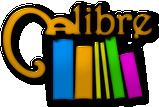Original author(s) | Development status Active | |
 | ||
Initial release 31 October 2006; 10 years ago (2006-10-31) Stable release 2.80 (24 February 2017 (2017-02-24)) [±] Repository github.com/kovidgoyal/calibre Written in Python, C (Qt), CoffeeScript, JavaScript | ||
How to use calibre for managing e books
Calibre (stylised calibre), a free and open-source e-book computer software application suite which runs on multiple platforms, allows users to manage e-book collections as well as to create, edit, and read e-books. It supports a variety of formats (including the common EPUB and Kindle MOBI formats), e-book syncing with a variety of e-book readers, and conversion (within DRM restrictions) from different e-book and non-e-book formats.
Contents
- How to use calibre for managing e books
- How to download and install calibre software
- History
- Features
- Associated apps
- References
How to download and install calibre software
History
On 31 October 2006, when Sony introduced its PRS-500 e-book reader, Kovid Goyal started developing "libprs500", aiming primarily to enable the use of the PRS-500 formats on Linux. With support from the MobileRead forums, Goyal reverse-engineered the proprietary file format LRF.
In 2008 the program's name changed to "calibre", written in all lowercase.
Features
Calibre supports many file formats and reading devices. Most e-book formats can be edited, for example, by changing the font, font size, margins, and metadata, and by adding an auto-generated table of contents. Conversion and editing are easily applied to appropriately licensed digital books, but commercially purchased e-books may need to have digital rights management (DRM) restrictions removed. Calibre does not natively support DRM removal but may permit DRM removal after the installation of plug-ins with that functionality.
Calibre allows users to sort and group e-books by metadata fields. Metadata can be pulled from many different sources, e.g., ISBNdb.com; online booksellers; and providers of free e-books and periodicals in the US and elsewhere, such as the Internet Archive, Munsey's, and Project Gutenberg; and social networking sites for readers, such as Goodreads and LibraryThing). It is possible to search the Calibre library by various fields, such as author, title, or keyword; though as of 2016, full-text search had not yet been implemented.
E-books can be imported into the Calibre library, either by sideloading files manually or by wirelessly syncing an e-book reading device with the cloud storage service in which the Calibre library is backed up or with the computer on which Calibre resides. Additionally, online content-sources can be harvested and converted to e-books. This conversion is facilitated by so-called "recipes", short programs written in a Python-based domain-specific language. E-books can then be exported to all supported reading devices via USB, Calibre's integrated mail server, or wirelessly. Mailing e-books enables, for example, sending personal documents to the Amazon Kindle family of e-book readers and tablets.
The content of the Calibre library can be remotely accessed. This can be accomplished via a web browser, if the host computer is running and the device and host computer share the same network; in this case, pushing harvested content from content sources is supported on a regular interval ("subscription"). Additionally, if the Calibre library on the host computer is stored in a cloud service, such as Box.net, Google Drive, or Dropbox, then either the cloud service or a third-party app, such as Calibre Cloud or CalibreBox, can be used to remotely access the library.
Since version 1.15, released in December 2013, Calibre also contains an application for creating and editing e-books directly, similar to the more full-featured Sigil application, but without that application's WYSIWYG editing mode.
Associated apps
Several third-party developers offer apps to help Calibre users manage and sync the e-books or e-files on their mobile devices with those loaded in Calibre. Examples include:
